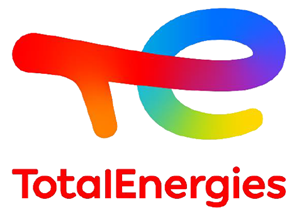Sign up for daily news updates from CleanTechnica on email. Or follow us on Google News!
In some ways, the transition to EVs seems like a simple, almost linear thing. Today, the vast majority of new vehicle sales are still internal combustion engine models. States like California are saying all new sales need to be EVs by 2035, with increasing amounts that must be electric every year between now and then. It’s going to be a challenge, but it’s just a steep hill to climb, right?
But, a recent report from J.D. Power makes it pretty clear that things will not be as simple as we had hoped. Instead of climbing one hill in the United States, it’s going to be more like climbing 50 different hills simultaneously. Some of the hills have not only a good path to the top, but supplies and some helping hands along the way. Other hills, you’re going across bare terrain. Others are not only a solo climb up a cliff face, but there are people on ledges actively throwing things at you to get you to fall.
As you can probably imagine, we aren’t going to climb all of these hills at the same speed, and we’ll be lucky to ever get to the top of some of them.
EV adoption in America is becoming increasingly divided, with active states on track to match internal combustion engine (ICE) vehicles, while EV purchases decline in less-active states. This E-Vision Intelligence Report analyzes monthly EV Index updates and J.D. Power studies to highlight emerging trends and shifts in EV consumer sentiment, exploring how this trend will unfold in the next decade and identifying leading and slow transitioning states.
Why Some States Are Doing Worse Than Others
According to the report, EV adoption rates are increasing nationwide, with EV sales accounting for 8.6% of all new-vehicle retail market. Year-over-year, overall EV adoption is up 1 point on its 100-point index, resulting in a total Adoption score of 21. However, there is considerable variation in EV adoption at the state level.
EV adoption in the U.S. is split into two camps: states offering incentives and infrastructure, and those that haven’t. Top states like California and Washington continue to see steady growth, while others like Michigan and Iowa experience declining adoption rates. In some places, there are not only not supports for EV adoptions, but punitive taxes and extra vehicle registration fees on them that go above and beyond what’s theoretically needed to pay for road construction.
California is predicted to achieve a 94% new vehicle EV sales rate by 2035, but at the lowest, North Dakota is on track to only get 19% adoption at that time. Even wealthier higher population states are going to lag far behind California for various reasons.
Speaking of wealth, another thing that’s going to hold back adoption is pricing. The EV market is still striving for true parity with ICE vehicles, but recent news has focused on luxury SUVs and trucks like the Cadillac Escalade IQ and Tesla Cybertruck. Tesla’s price cuts have boosted their affordability and they currently dominate 63% of all EV sales, so this may change. But, the high price of EVs as manufacturers focus on expensive (but more profitable) vehicles means that many people in the states that lag behind won’t be able to buy one as soon as we had hoped.
How Can We Solve This Problem?
Sadly, I think the answer to this is that we largely don’t. Normally, I’m a big optimist about EVs, but when it comes to some challenges, maybe it’s better to choose our battles wisely. But, if we concentrate different kinds of effort in the places where a kind of effort fits the problem, we can probably improve the numbers and beat the J.D. Power estimates. We probably won’t get North Dakota to 100%, though.
In other words, we should focus on making things good instead of trying to make them perfect, and we’re going to need to avoid “one size fits all” solutions.
In places that are politically friendly to EV adoptions, the political approach is working. California is a great example, but there are other blue and purple states that are going to continue to back EVs and help accelerate adoption toward 100%. So, for those places, it’s going to be important to keep doing what we’re already doing.
For purple states, the approach will need to be adjusted some. The idea that EVs are something Democrats should support and Republicans need to oppose is going to get in the way. So, getting political supports for EVs through is going to require not making EVs a left-right issue. The benefits need to be argued on their own, and Democrat buzz words like “climate justice” need to not be part of the conversation.
In reddish-purple states and red states, the political arena is not where EV advocates should be fighting. You’re not going to convince the politicians receiving donations from oil companies and other bad actors to suddenly stop liking money. So, the argument needs to be taken directly to car buyers. As much as the reddest red anti-EV states are going to stand in the way, they’re not going to be able to get away with any outright bans on EVs, or otherwise strictly mandate ICE sales. So, getting individual car buyers to make the switch is going to be where the effort needs to go.
In all places, getting manufacturers to offer more affordable EVs is going to be a key part of the battle, though. In places where incentives for EVs are almost non-existent (aside from maybe federal tax credits, assuming the political winds don’t shift), affordability is going to be essential. So, we need to keep putting pressure on manufacturers to offer affordable EVs and not take the easy way out for too long.
Most importantly, we need to be ready to adapt. Between now and 2035, some places are going to get better for EV adoption, while others may get even worse. Deciding a strategy in 2023 and making it a religious belief isn’t safe. As we see changes happen, we need to keep reevaluating what the best tool (public vs private) is for a given jurisdiction. We need to roll with those punches, and stick with it.
Featured image by NASA (Public Domain).
Have a tip for CleanTechnica? Want to advertise? Want to suggest a guest for our CleanTech Talk podcast? Contact us here.
EV Obsession Daily!
I don’t like paywalls. You don’t like paywalls. Who likes paywalls? Here at CleanTechnica, we implemented a limited paywall for a while, but it always felt wrong — and it was always tough to decide what we should put behind there. In theory, your most exclusive and best content goes behind a paywall. But then fewer people read it!! So, we’ve decided to completely nix paywalls here at CleanTechnica. But…
Thank you!
Tesla Sales in 2023, 2024, and 2030
CleanTechnica uses affiliate links. See our policy here.




